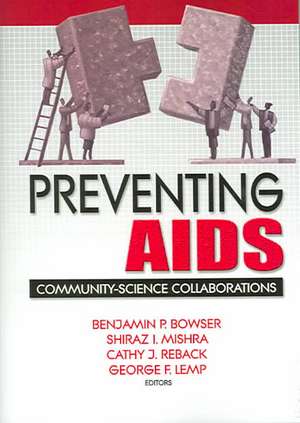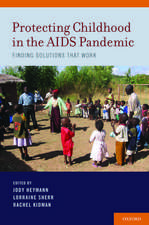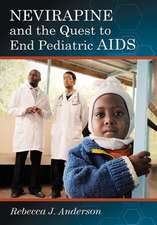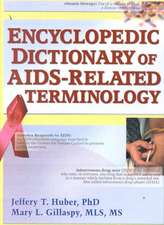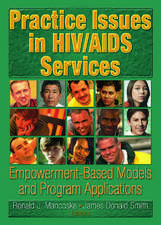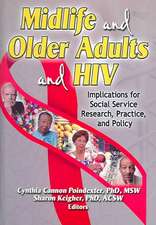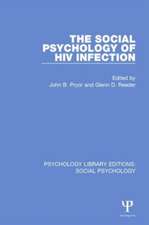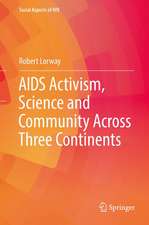Preventing AIDS: Community-Science Collaborations
Autor R. Dennis Shelby, Benjamin Bowser, Shiraz Mishra, Cathy Rebacken Limba Engleză Paperback – 25 oct 2004
This book is designed to help frontline prevention organizations answer two questions that are of utmost importance. First, how effective are their services; and second, can their work be improved? The absence of rigorous evaluation is a barrier to stable funding for community organizations, and the strategies in Preventing AIDS: Community-Science Collaborations can help overcome that barrier. The book is a guide to successful cooperative efforts between researchers and community-based organizations. The information it presents will help community-based programs acquire detailed, timely information on program effectiveness and outcomes. It also provides researchers with methods for accessing hard-to-reach or hidden HIV high-risk groups. Handy tables and figures make important data easy to access and understand.
In Preventing AIDS: Community-Science Collaborations, you’ll learn about the difficult but critically important collaboration between community organizations who do frontline prevention work and university scientists who evaluate the effectiveness of that work. The book describes the community-researcher equal partner collaboration (CREPC) model for community-based collaborative research. In addition, it examines six unique efforts to prevent the spread of AIDS among high-risk populations, such as prostitutes, injection drug users, impoverished pregnant women, migrant workers, transgendered persons, and prison inmates. The case studies in Preventing AIDS: Community-Science Collaborations describe the frustrations of outreach workers and counselors who suddenly must help design a survey they fear will be intrusive, and the parallel problems faced by scientists who are told that their traditional measures mean little to outreach workers.
Preventing AIDS: Community-Science Collaborations presents funders’ perspectives on collaborative AIDS research and examines the collaborative and funding aspects of:
- the CAL-PEP prevention programs for drug injectors and sex workers
- efforts to promote HIV prevention for migrant farm workers and evaluate those efforts’ effectiveness
- the ongoing collaboration between The Center for AIDS Prevention Studies (University of California, San Francisco), Centerforce (a statewide nonprofit agency providing services and advocacy to prisoners and their families), and San Quentin State Prison
- the effort of the Los Angeles County HIV Epidemiology Program and three community-based organizations, which collaborate to provide culturally appropriate outreach and HIV education/prevention services to transgendered individuals of various ethnic origins
- San Francisco’s PHREDA project and the way its creators collaborated to better understand and serve high-risk women
- The U-Find-Out (UFO) Study, funded by the Universitywide AIDS Research Program of the State of California
| Toate formatele și edițiile | Preț | Express |
|---|---|---|
| Paperback (1) | 199.45 lei 43-57 zile | |
| Taylor & Francis – 25 oct 2004 | 199.45 lei 43-57 zile | |
| Hardback (1) | 724.49 lei 43-57 zile | |
| Taylor & Francis – 29 oct 2004 | 724.49 lei 43-57 zile |
Preț: 199.45 lei
Preț vechi: 276.08 lei
-28% Nou
Puncte Express: 299
Preț estimativ în valută:
38.17€ • 39.95$ • 31.77£
38.17€ • 39.95$ • 31.77£
Carte tipărită la comandă
Livrare economică 31 martie-14 aprilie
Preluare comenzi: 021 569.72.76
Specificații
ISBN-13: 9780789012470
ISBN-10: 0789012472
Pagini: 250
Dimensiuni: 156 x 216 x 25 mm
Greutate: 0.46 kg
Ediția:1
Editura: Taylor & Francis
Colecția Routledge
Locul publicării:Oxford, United Kingdom
ISBN-10: 0789012472
Pagini: 250
Dimensiuni: 156 x 216 x 25 mm
Greutate: 0.46 kg
Ediția:1
Editura: Taylor & Francis
Colecția Routledge
Locul publicării:Oxford, United Kingdom
Cuprins
- About the Editors
- Contributors
- Preface
- Chapter 1. Introduction to Community-Science Collaboration: Equal Partners in Investigation (Benjamin P. Bowser and Shiraz I. Mishra)
- Collaboration
- CREPC
- Chapter 2. Collaborative AIDS Research: A Funder’s Perspective (Bart K. Aoki, Roger K. Myrick, George F. Lemp, and Steve Truax)
- The Values of Collaborative Research
- Challenges to Community Collaboration and HIV Prevention Research
- Opportunities Offered by Collaborative HIV Prevention Research
- Funding for Community Research on AIDS: UARP
- Conclusion
- Chapter 3. Preventing AIDS Among Injectors and Sex Workers (Gloria Lockett, Carla Dillard-Smith, and Benjamin P. Bowser)
- Beginning of Collaboration
- Methods
- Results and Collaborative Findings
- Conclusion
- Chapter 4. Collaborative Research Toward HIV Prevention Among Migrant Farmworkers (Shiraz I. Mishra, Fernando Sanudo, and Ross F. Conner)
- The Collaboration
- The Study
- Research Findings
- Conclusion: Lessons Learned
- Appendix: Recruitment Criteria and Sample Size of Farmworkers
- Chapter 5. A Health Promotion Intervention for Prison Inmates with HIV (Barry Zack, Olga Grinstead, and Bonnie Faigeles)
- Introduction
- Justification
- Methods
- Evaluation Plan (Research Design)
- Results
- Discussion
- Chapter 6. The Los Angeles Transgender Health Study: Creating a Research and Community Collaboration (Cathy J. Reback and Paul Simon)
- Introduction
- Study Objectives
- The Collaboration Team
- Study Design
- The Study
- Findings
- Future Analyses
- Benefits and Challenges of Collaboration
- Chapter 7. Critical Collaborations in Serving High-Risk Women: The PHREDA Project (Geraldine Oliva, Jennifer Rienks, and Lisa Netherland)
- Background
- The Three Phases of PHREDA
- Benefits and Challenges of Collaboration
- Challenges to Research
- Conclusion
- Chapter 8. The Challenges and Rewards of Collaborative Research: The UFO Study (Kristen Ochoa, Rachel McLean, Heather Edney-Meschery, Dante Brimer, and Andrew Moss)
- A Typical Day in the UFO Study
- Introduction
- Doing Research Differently
- The Study
- Beginning in the Middle
- The Community Collaborator’s Perspective
- The Santa Cruz Needle Exchange
- The Peer Interviewer/Counselor Perspective
- The Researcher’s Perspective
- Where We Are Now
- Chapter 9. Synthesis of Case Studies and Service Providers’ Reactions (Benjamin P. Bowser and Lisa M. Krieger)
- Part I: Meta-Analysis of Case Studies
- Part II: Assessing CREPC
- Chapter 10. Conclusion (Benjamin P. Bowser, Shiraz I. Mishra, Cathy J. Reback, and George F. Lemp)
- The Challenge
- Business As Usual
- New Business: Grounded Research and Services
- Equal Partner Collaboration
- Final Word: This Is Only a Beginning
- Index
- Reference Notes Included
Notă biografică
R Dennis Shelby, Benjamin Bowser, Shiraz Mishra, Cathy Reback
Descriere
This book is designed to help frontline prevention organizations answer two questions that are of utmost importance. First, how effective are their services; and second, can their work be improved? The absence of rigorous evaluation is a barrier to stable funding for community organizations, and the strategies in Preventing AIDS: Community-Science Collaborations can help overcome that barrier. The book examines six unique efforts to prevent the spread of AIDS among high-risk populations such as prostitutes, injection drug users, impoverished pregnant women, migrant workers, transgendered persons, and prison inmates. You'll learn about the difficult but critically important cooperative efforts between community organizations who do frontline prevention work and university scientists who evaluate the effectiveness of that work. Handy tables and figures make important data easy to access and understand.
To view an excerpt online, find the book in our QuickSearch catalog at www.HaworthPress.com.
To view an excerpt online, find the book in our QuickSearch catalog at www.HaworthPress.com.
